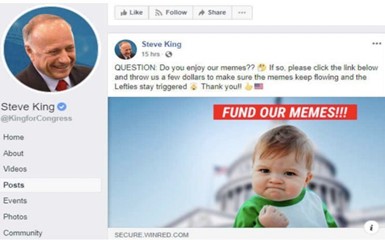The US Court of Appeals for the Fifth Circuit affirmed a senior party mark but found that the district court committed clear error in finding that a similar junior party mark was valid. The Fifth Circuit also found that the district court abused its discretion in awarding attorneys’ fees to the senior user. Appliance Liquidation Outlet, L.L.C. v. Axis Supply Corp., Case No. 23-50413 (5th Cir. June 21, 2024) (Smith, Haynes, Douglas, JJ.)
Appliance Liquidation Outlet (ALO), a decades-old appliance store in San Antonio, Texas, brought a trademark action under the Lanham Act and Texas law (which in all relevant aspects tracks the Lanham Act) against Axis Supply Corporation, another San Antonio appliance store that opened in 2021. Axis’s store and social media prominently featured the phrase “Appliance Liquidation”:

ALO noted that Axis’s opening happened to coincide with an influx of customers conflating ALO with Axis. ALO’s storefront had prominently displayed a banner reciting “Appliance Liquidation Outlet” for years:

Although ALO had never registered its mark, ALO had long engaged in a variety of promotional activities to raise brand recognition, including partnering with local sports teams and holding antique exhibitions and car shows.
Soon after Axis opened its store, ALO experienced a rush of customers who failed to differentiate between the stores and believed that ALO operated both. ALO requested that Axis stop using “Appliance Liquidation” and sued Axis in state court when Axis refused. Axis removed the dispute to the federal district court. After a bench trial, the district court held for ALO, enjoining Axis from using “Appliance Liquidation” and “Appliance Liquidation Outlet” and causing confusion between the two businesses. The district court also awarded attorneys’ fees under 15 U.S.C. § 1117(a) to ALO, finding that Axis’s decision to change its name only a week before trial (about 1.5 years into the dispute) amounted to litigating in an unreasonable manner. Axis appealed.
The Fifth Circuit affirmed the district court’s holding that Axis had infringed ALO’s “Appliance Liquidation Outlet” mark but assigned clear error to the district court’s finding that “Appliance Liquidation” was valid mark. The Fifth Circuit also found that the district court had abused its discretion in awarding attorneys’ fees to ALO.
With respect to the marks’ validity, the Fifth Circuit noted that both marks were unregistered and thus were not presumptively valid. The Court found that the record did not support the conclusion that “Appliance Liquidation” was a source identifier and thus found that it was not a valid mark. However, the Fifth Circuit was satisfied that “Appliance Liquidation Outlet” served as a source identifier. The Court found that although “Appliance Liquidation Outlet” was descriptive, the evidence established that San Antonian consumers perceived the mark as conveying information about ALO, not merely reflecting a class of services or businesses, and [...]
Continue Reading
read more

 Subscribe
Subscribe




